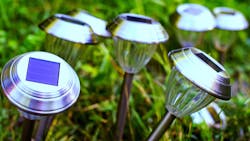The Importance of Low IQ in Energy-Harvesting Systems (Download)
Energy-harvesting-based wireless sensor networks (WSNs) are the result of enabling WSN nodes with the ability of extracting energy from the surrounding environment. There’s no one single wireless technology or standard on which WSN works. However, numerous wireless standards help in the success of WSN systems. The most popular among these are Bluetooth, ultrawideband (UWB), and Zigbee wireless standards as per IEEE 802.15.4.
The main component in any WSN network is a WSN transceiver. The transceiver houses both the RF transmitter and RF receiver. The WSN transceiver complies with any of the WSN wireless standards, one of them being IEEE 802.15.4
